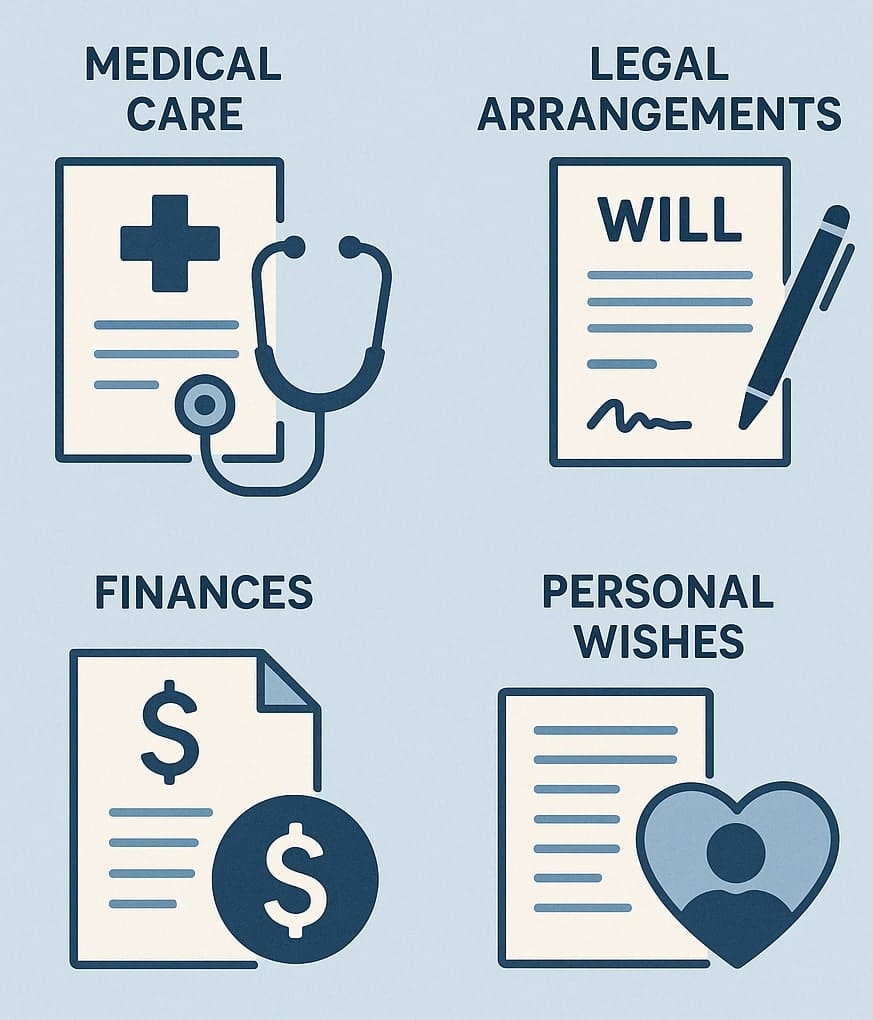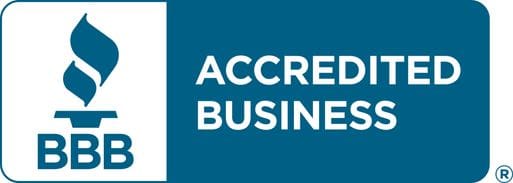
End-of-Life Planning
End-of-life planning is the process of preparing for the final stages of life — including medical decisions, legal arrangements, financial matters, and personal wishes. Though it can feel uncomfortable to think about, proper planning is a powerful act of care for both yourself and your loved ones. It ensures that your choices are honored and reduces the burden on family members during a difficult time.
Here’s a closer look at what end-of-life planning involves and the key areas you should consider.
What is End-of-Life Planning?
End-of-life planning includes making decisions and legal arrangements about:
- How you want to be cared for if you become seriously ill.
- How your assets should be handled and distributed.
- Who will make decisions on your behalf if you can’t.
- Your wishes regarding funeral, burial, or cremation.
It’s not just for the elderly or the seriously ill — everyone can benefit from having a plan, regardless of age or health status.
Key Components of End-of-Life Planning
Once you understand why end of life planning and care is so important, and you have a plan in place to communicate with your loved ones, you can take comfort in the fact that you know you’ve done everything you can on your end.
Use the following checklist to ensure you have a plan that’s on point and complete.
- Prepare your end of life planning documents
- Decide between a Will or Trust
- Make a list of your assets
- Determine end of life housing plans
- Write down your final wishes including funeral plans and burial arrangements
- Create an obituary and/or death notice
- Prepare your end of life planning documents
It’s not uncommon to feel a bit overwhelmed as you begin this aspect of your Estate Plan. But once you start the process, you’ll see it’s not all that complicated. Knowing what you need ahead of time can help, as you’ll feel confident when you have a course of action to follow. You may need some of the following documents:
- Living Trust: Lets you manage your estate and assets while you’re living and after you pass away.
- Living Will: Ensures your wishes about medical decisions will be followed in the event you become incapacitated and are unable to express them on your own.
- Last Will and Testament: Written legal document that details how your assets should be handled and what happens to any dependents after you pass.
- POAs: Healthcare POA/Durable Medical POA/Healthcare Proxy/Durable POA for Finances: Power of Attorney documents can vary in scope and authority but will appoint or designate someone to make legal, financial, medical or business decisions on your behalf in the event you can no longer do so on your own.
- Organ/Tissue Donor Designation: Documents any donations of tissue or organs you would like to allow upon your death.
- Domestic Partnership Agreement (if applicable): Used to declare legal rights and responsibilities for long-term partnerships.
- Decide between a will or trust
There is a common misconception that Trusts are only for the very wealthy. But the reality is, anyone who owns property or assets worth $160k or above should consider a Trust. Not only do Trusts protect you, your loved ones and your legacy once you’re gone, they also offer privacy. And, when your estate is held in a Trust, your loved ones will avoid the costly, often painful and messy public process of probate.
Keep in mind, even if you’re not quite ready to create your Trust right now, a Will can be a good start.
Not sure which path is the best one to take? The easiest way to think about a Will vs Trust is that Wills tend to be the simpler route, whereas Trusts can be a bit more complex. A key difference between the two is a Will isn’t effective until after you pass away, and a Trust goes into effect as soon as you create and fund it.
Use a Will to:
- Name guardians
- Plan for your final arrangements
- State how you want your assets passed down
Your Trust is a living document that essentially owns and holds your assets. Trusts are good for:
- Stronger control over asset distribution
- Privacy (Wills go through probate, the process by which the court distributes your estate per your instructions; they are public information, whereas a Trust is private)
- Protection (since your Trust technically owns your assets, your estate will be protected from litigation)
- List your assets
Assets are what you own and will pass down to your heirs. A list of assets can widely vary depending on what you’ve accumulated throughout your life. The following list is an example of the types of assets you might include in your Estate Plan.
- Savings/Checking Accounts
- Cash/CDs/Treasury Bills
- Real Estate/Land
- Investments/Stocks/Bonds
- Pensions/Retirement Plans
- Life Insurance Policies
- Art/Collectibles
- Jewelry
- Corporate Assets
- Determine end of life housing
If you’re at the point where you need to start thinking about end of life housing, a few tips can help you move through the process. The first thing to determine is what type of housing you anticipate needing. This will be key in deciding on what questions to ask and what you’ll want to be thinking about. You may need an assisted living facility, a nursing home or in-home care.
If you think you’ll be transitioning into an assisted living facility, you’ll want to consider the layout and amenities, the services available and what level of medical care is offered. Touring a facility can help you get a feel for things like how friendly and warm the staff is, what the culture of other residents seems to be and how the meals will appeal to you.
If you think a nursing home is the next probable step for you, you’ll want to ensure the facility you choose is a good fit for your needs now and into the future. A nursing home will be one step up from an assisted living facility in that they generally offer round the clock, more intensive care. Think about the layout of the building or buildings, how many nursing stations there are, if there are common rooms for activities and what patients’ rooms look like (do you want a window? A TV?).
In-home care will likely be a very different experience, and you’ll want to be in tune with how comfortable you are with the caregiver who will be in your home. Finding the right fit may be more important in this scenario than any other.
- Decide on funeral and burial arrangements
Though it can seem morbid, making plans for your funeral and burial arrangements ahead of time is one of the kindest things you can do for your loved ones. Grief can grip us in many ways, and sometimes it takes all we have to just get through the day after we lose someone we love. Being forced to make decisions about how to say goodbye and all that goes into planning a funeral and burial can just be too much. You can ease that burden, even if it’s just by a little bit, when you make some of the plans ahead of time. Think about your religious beliefs and your final wishes, and then plan for how you want your loved ones to say goodbye to you.
There are several types of funerals:
- Traditional Service: Also known as a full funeral service, traditional services usually take place in a church or funeral home.
- Viewing and Visitation: Typically involves an open casket during a set time period for visitation.
- Wake: Often a gathering at a home, usually before a more formal service.
- Memorial Service: Generally a service that happens after a burial or cremation.
- Celebration of Life: A service that allows for loved ones to pay tribute to the deceased in a personal way.
- Committal or Graveside Service: Usually brief, a committal or graveside service may occur after a funeral and will oftentimes include prayers and flowers.
- Scattering of Ashes Ceremony: Common after cremation, the scattering of ashes can occur at a place or places special to the deceased.
In addition to funerals, there are also several options for types of burials:
- In-Ground: In a cemetery, one of the traditional choices for laying a loved one to rest.
- Above Ground (Public or Private Mausoleum): Another option for final resting is placing the body or ashes in a mausoleum, a structure used for entombment.
- Above Ground (Lawn Crypt): Like a mausoleum, lawn crypts are an above-ground space that’s enclosed and can be for one or two people.
- Cremation: The process of disposing a body by reducing it to chemical components through combustion (burning).
- Natural Burial: Becoming increasingly popular in recent years, natural burials allow the body to decompose and naturally recycle into the earth.
- Burial at Sea: Disposing of a body or ashes from a boat, burials at sea are common for the Navy and veterans as well as private citizens.
- Create Obituary and Death Notice
Many times, an obituary is written after a death, but it doesn’t necessarily have to be left until then. Some people opt to write their obituary and death notice on their own, and others choose to simply have a conversation with a trusted friend or family member, letting them know what they would like included when the time comes.
A death notice will usually include basic information like a full name (and maiden name, if desired) and a nickname (if one was used). It can also have the date and place of the death, surviving family members’ names and details of any service or funeral. Cause of death is sometimes (but not always) included, and it’s common to add the names of charities or places where donations can be made to honor the deceased.
Facing mortality is difficult for a lot of us, but thinking practically about it, with a clear mind and a list of helpful information to guide you, can ease the discomfort and help you navigate the process. While death is often a sad, uncomfortable time, those left grieving can be comforted with the knowledge that you prepared in your own way, making your wishes known and planning as much as you could to help them through their loss.
Equipping yourself with proper end of life planning tools, like our helpful checklist, will make preparing for that inevitable part of life just a little bit easier. Don’t put off your end of life planning another day!
Remember: End-of-life planning isn't about focusing on death — it's about ensuring peace, dignity, and control over your future. By making decisions now, you spare your loved ones confusion and hardship later. Starting the conversation today can bring unexpected comfort and clarity for everyone involved.


